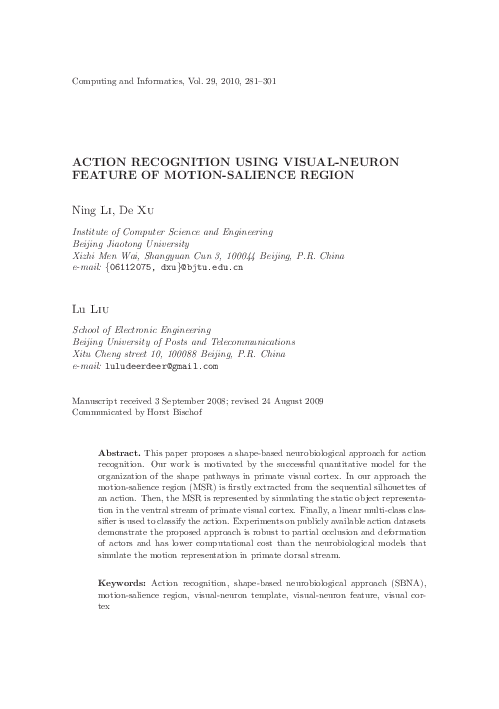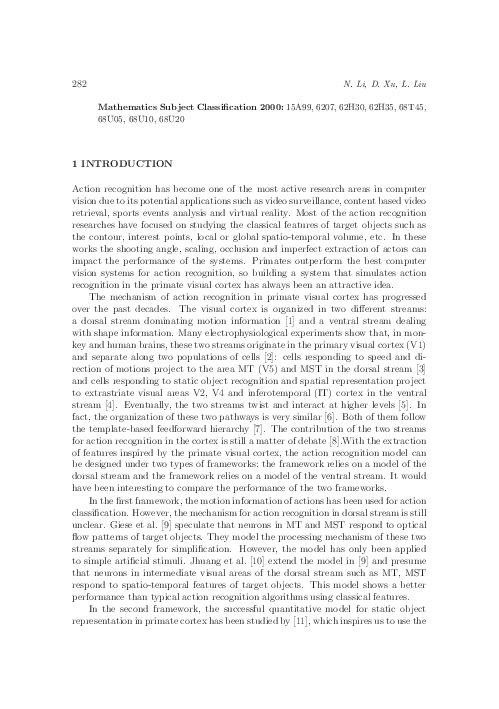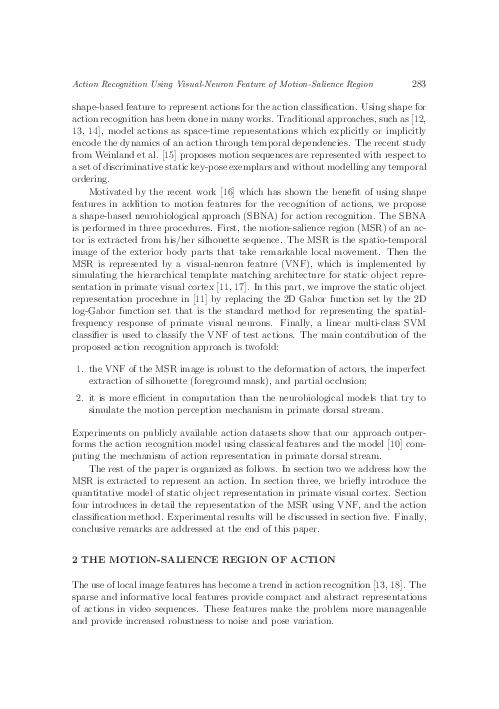Action Recognition Using Visual-Neuron Feature of Motion-Salience Region
keywords: Action recognition, shape-based neurobiological approach (SBNA), motion-salience region, visual-neuron template, visual-neuron feature, visual cortex
This paper proposes a shape-based neurobiological approach for action recognition. Our work is motivated by the successful quantitative model for the organization of the shape pathways in primate visual cortex. In our approach the motion-salience region (MSR) is firstly extracted from the sequential silhouettes of an action. Then, the MSR is represented by simulating the static object representation in the ventral stream of primate visual cortex. Finally, a linear multi-class classifier is used to classify the action. Experiments on publicly available action datasets demonstrate the proposed approach is robust to partial occlusion and deformation of actors and has lower computational cost than the neurobiological models that simulate the motion representation in primate dorsal stream.
mathematics subject classification 2000: 15A99, 6207, 62H30, 62H35, 68T45, 68U05, 68U10, 68U20
reference: Vol. 29, 2010, No. 2, pp. 281–301


